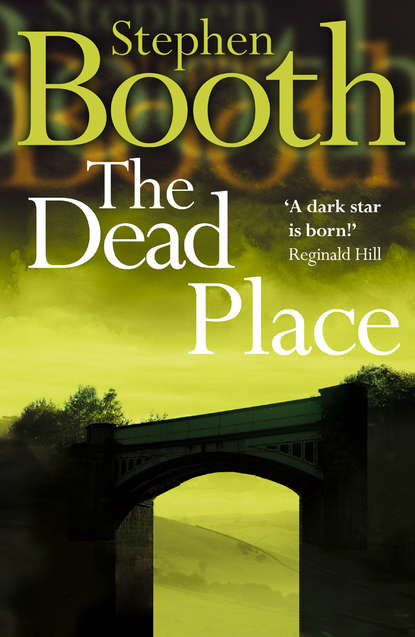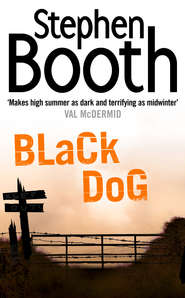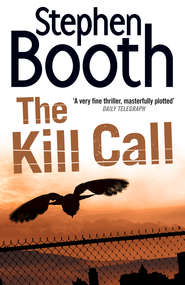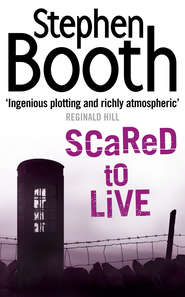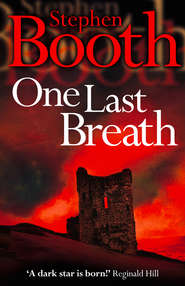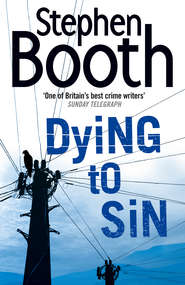По всем вопросам обращайтесь на: info@litportal.ru
(©) 2003-2024.
✖
The Dead Place
Автор
Год написания книги
2019
Настройки чтения
Размер шрифта
Высота строк
Поля
‘That’s a bit odd,’ he said.
‘Why?’
‘Well, I was assuming that whoever cleared the ivy from these stones was an amateur historian, trying to confirm the names of people buried here. Or maybe a relative who wanted an ancestor to be remembered, not just lost in the undergrowth.’
‘Seems reasonable,’ said Fry.
‘But look at this – the name and dates haven’t been exposed, just the inscription after them. It’s only a short one, too. Caro data vermibus. What does that mean?’
‘I’ve no idea.’
‘You’re the educated one.’
‘Ben, I took a degree in Criminal Justice and Policing at the University of Central England. It didn’t make me fluent in Latin.’
Cooper walked backwards and forwards in front of the stones, but beyond the first few feet of ground from the road the blanket of nettles and brambles was dense and unbroken. He watched a butterfly flit among the nettles.
Impatiently, Fry walked back to the entrance and looked up the road. ‘How near is this to Wardlow, did you say?’
‘Only a couple of miles.’
In the language of Derbyshire place names, ‘low’ always meant ‘high’. So this particular village must have been named after the lookout hill, Wardlow Cop, whose flattened conical shape appeared on their left as they began the descent from Monsal Head.
Wardlow itself was just as DI Hitchens had described it – a series of farms and houses scattered along one road. It was bordered on both sides by long, narrow strips of pasture land, preserved in their medieval patterns by drystone walls, networks of them strung across the fields and climbing the hills. Some parts of the White Peak plateau were said to have twenty-four miles of wall for every square mile of farmland. Instead of regular field patterns, the eye was likely to see a confusing geometry of stone, long courses of wall exaggerating every contour in the landscape.
Some of the farms at Wardlow had been converted into homes, but others were still working. A tractor turned out of a yard as they reached the start of the village, where two Union Jacks were flying. Cooper noticed that the village pub was closed during the day, like so many in places without much tourist trade. The Church of the Good Shepherd was just beyond a cattery operating from a cluster of surplus farm buildings. It was a small stone church with a slate roof and leaded windows, but no tower. Anything bigger would have been out of place.
They finally found space wide enough to park alongside someone’s hedge without blocking the road completely, and they crossed to the church. Through double gates they walked into a grassed area, where a pair of stocks stood near the rear wall. Cooper didn’t think they were medieval – more likely erected for a village fête some time in the last few decades. A chance to throw wet sponges at the vicar, rather than rotten eggs at a convicted felon. Ritual humiliation, all the same.
Behind the church was the graveyard itself, small and under-used. There’d be no need to close this one to burials for a few years yet.
‘Melvyn Hudson said there were very few funerals in Wardlow,’ said Fry.
‘He’s from the funeral directors, Hudson and Slack?’
‘That’s right.’
‘Well, I’m sure Mr Hudson is right. A lot of these graves date back to Victorian times.’
Several large sycamores and beeches darkened the top end of the graveyard, and nothing grew underneath the trees. Even their own seedlings had sprouted and died in the barren ground. Dead branches, beech nuts and small stones crunched under their feet as they walked among the gravestones. Swallows swooped around them, diving almost to the ground in pursuit of the small flies that hung in clouds over the graves. The Victorian graves were surrounded by low iron railings, rusted and falling apart in the damp air.
‘Here’s the deceased councillor,’ said Cooper. ‘Mrs Sellars, right? It’s by far the newest burial here.’
‘OK. Now, where’s the phone box?’
‘The other side of the church.’
A small parish room was attached to the church, a kitchen visible through a window piled with jars, cutlery and old newspapers. As they walked past it towards the phone box, Cooper saw a movement inside a house directly across the road. It was no more than a shape against the light, but he knew they were being watched.
‘Has anyone spoken to the neighbours?’ he asked.
‘All those who had a view of the church or the phone box,’ said Fry. ‘Uniforms did it yesterday.’
‘The residents directly opposite have a good view.’
‘Unfortunately, they were attending the councillor’s funeral themselves.’
‘Pity.’
‘As you can see, there aren’t many others to talk to.’
Cooper looked at the red phone box itself, twenty yards away from where he was standing. It was more than a pity, wasn’t it? It was a big stroke of luck for the individual who’d made the phone call. There was no way he could have known that the occupiers of that property opposite weren’t watching every movement he made.
Although he hadn’t heard the tapes himself yet, Cooper was starting to have a sneaking doubt about the caller’s intentions. On the surface, he appeared to have taken care to conceal his identity, as might be expected. But some of this individual’s actions looked almost reckless – as if he wanted to be identified. Maybe the whole thing was no more than a cry for help. But there was no point in suggesting the idea to Fry.
Behind the churchyard, Cooper could see a sprawl of farm buildings and trailers, and a wandering pattern of drystone walls. A cockerel crowed somewhere nearby, though it was already afternoon. The phone box stood close to a footpath sign, its fingerpost so weathered that the lettering had worn away completely, and now it seemed to indicate a path that led nowhere.
Then the sun came out, and the limestone walls formed themselves into a bright tracery running across the landscape. Cooper wondered what he might find if he followed those white pathways. The instinct to pursue the light rather than return to the gloomy churchyard was almost irresistible.
Half a mile north, at the junction with the A623, there was a smaller collection of houses called Wardlow Mires. A petrol station and another pub called the Three Stags’ Heads sat among farms and some derelict buildings covered in honeysuckle.
The A623 took traffic through sheep pastures and across the plateau towards Manchester. Almost as soon as Cooper turned on to it, he sensed the landscape opening out on his left. In a gap between the hills stood a strange, isolated outcrop of limestone. Its distinctive shape looked almost artificial – straight, pillared walls of white rock split by crevices and fissures, and a rounded cap grassed over like a green skullcap. The slopes of short, sheep-nibbled grass around it seemed to be gradually encroaching on the limestone, as if reaching up to pull it back into the ground.
The rock looked familiar. Searching his memory, Cooper thought it might be called Peter’s Stone. He had no idea what the name meant, but guessed it was probably some biblical reference to St Peter, the reasons for it lost in the passage of time and the mists of folklore.
‘Can I listen to the tapes some time, Diane?’ he said.
‘Don’t imagine you’ll recognize the voice. It’s electronically disguised.’
‘I might have some ideas, though.’
‘Yes, OK. Remind me when we get back.’
‘Thanks.’
Fry tapped a finger on the map. ‘Ben, we should be going the other way. Eyam.’
Cooper pulled over and reversed into the Litton turning. ‘By the way,’ he said, ‘my unidentified remains were found at Litton Foot, in Ravensdale.’
‘Yes? What about them?’
‘Litton Foot is less than three miles from Wardlow across country. It falls within your circle.’
Fry looked at the map. ‘But your body is eighteen months old, Ben.’
‘I know.’ Cooper shrugged. ‘I just thought I’d mention it.’
‘Tell me about Eyam.’





